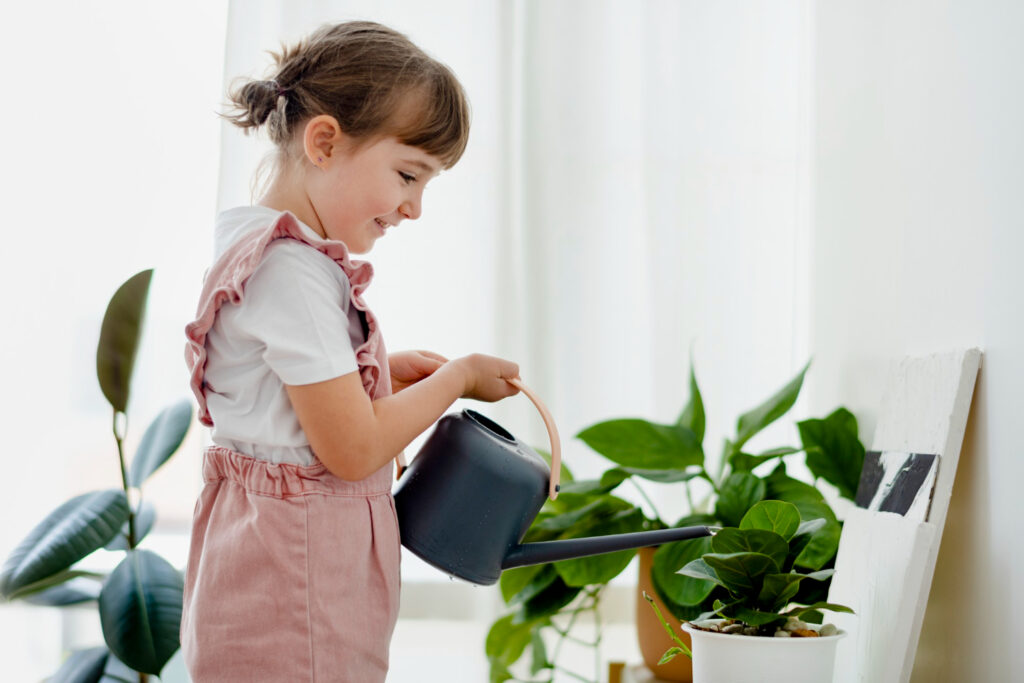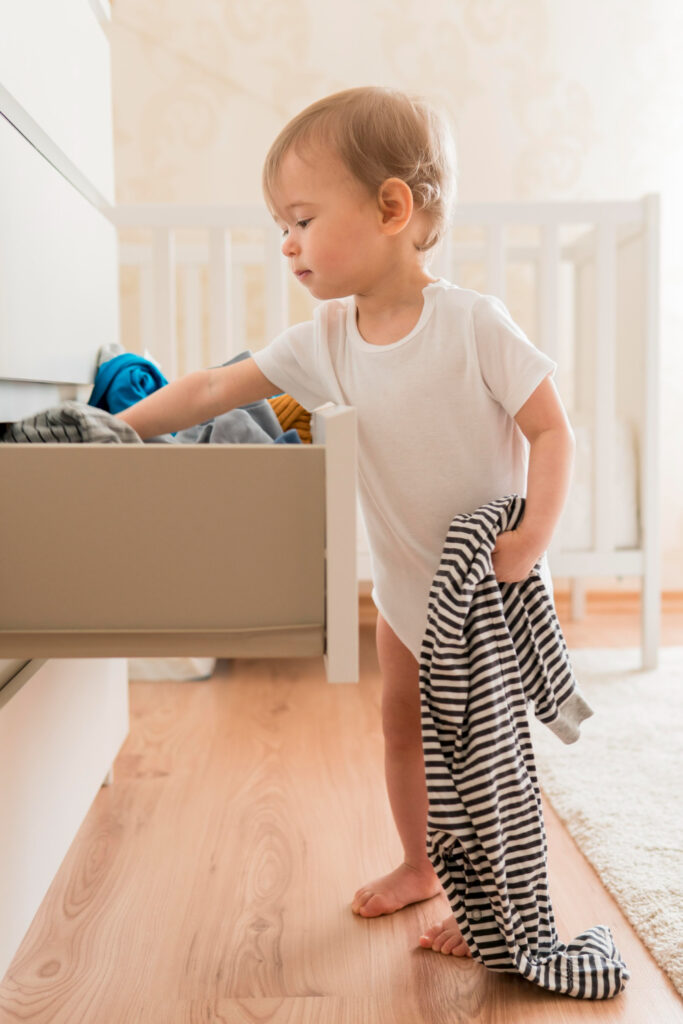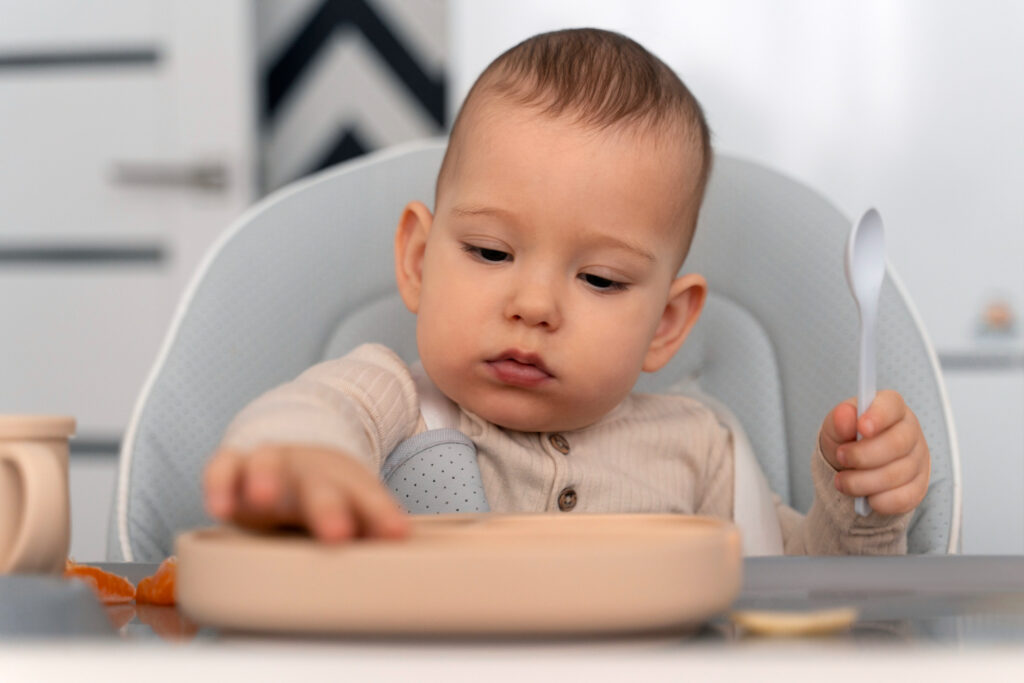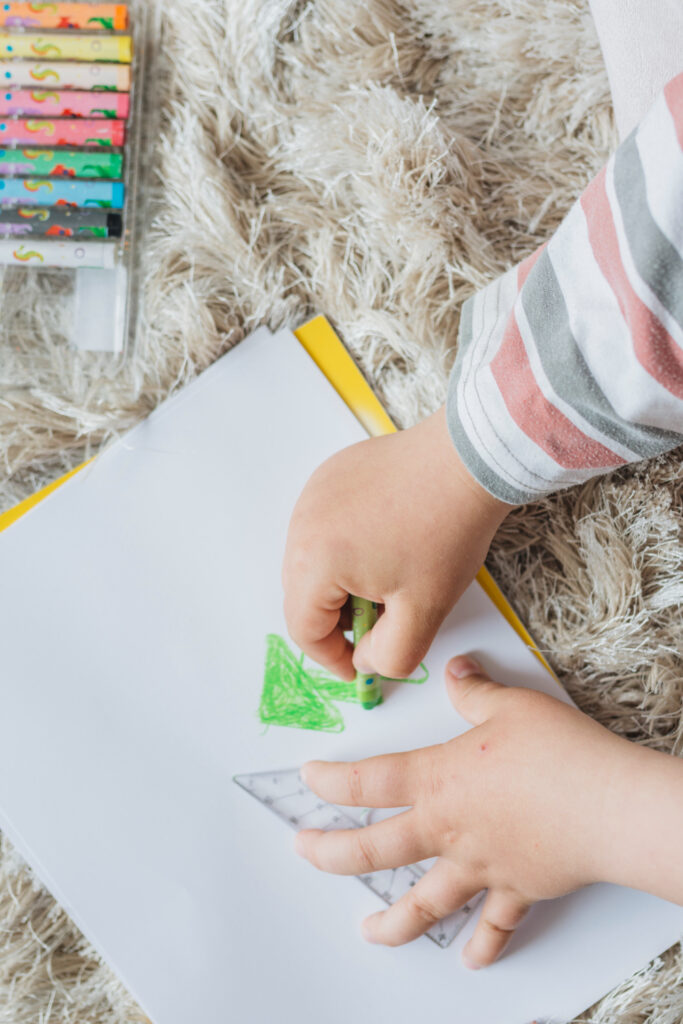Simple activities to encourage independence
As children grow from infants to toddlers, they are naturally curious and eager to explore. For example, they may want to hold the spoon or bottle during mealtime. In addition, they might start walking or crawling on their own. These behaviors, in fact, are often the first signs of independence in children.
Later on, they may want to dress or undress themselves, pour water on themselves during bath time, brush their own hair, or even try on their parents’ cosmetics, and so on. All of these, indeed, are signs of growing independence, self-awareness, and confidence in their abilities.
Therefore, the best way to support a child’s independence is to allow them to do things on their own, or to involve them in small tasks.
Here are a few more things you can do to help your child become more independent:
1. Helping with Household Tasks

One effective way to do this is by involving children in household chores is a great way to teach them responsibility.
1-2 Examples:
- Putting away their toys after playing
- Setting the table
- Sorting laundry by color
- Watering the plants
In turn these small tasks give them a sense of usefulness and contribution to family life.
2. Dressing Themselves

Letting your child choose their clothes and try dressing on their own builds fine motor skills and decision-making.
2-1 Tips:
- Offer two or three outfit options (to avoid conflict)
- Start with easy-to-wear clothes (elastic waist pants, t-shirts)
- Praise their effort, even if they make mistakes or mix up colors!
3. Making Choices
Giving limited choices allows children to feel in control while still staying within a safe framework.
3-1. Examples:
- “Would you like to read a story or draw?”
- “Do you want your apple cut up or whole?”
- “Do you want to wear your red shoes or blue ones?”
As a result these daily decisions help develop their ability to choose and take responsibility for their preferences.
4. Encouraging Independent Eating

Even if it’s messy at first, learning to eat independently is a key step toward autonomy.
4.1 Ideas:
- Use child-friendly utensils
- Offer easy-to-hold foods (veggie sticks, cheese cubes)
Let your child serve themselves a small portion with a spoon or ladle (under supervision)
5. Free Creative Activities

Drawing, cutting, gluing, playing with modeling clay… these activities allow children to explore freely, make their own choices, and develop coordination.
Moreover letting them create without overly directing their work helps build self-confidence.
6. Following a Routine
Routines give children structure and help them understand the order of daily tasks.
6-1 Example of a morning routine:
- Wake up
- Wash face and brush teeth
- Get dressed
- Eat breakfast
- Put away pajamas
Displaying a visual routine with pictures can help young children follow the steps on their own.
All in all raising a child to be independent can be a successful strategy with time and patience.
See Also : How Mistakes Help Shape Strong and Confident






